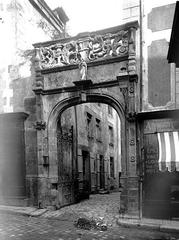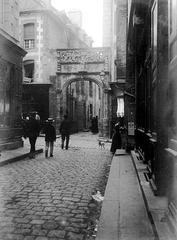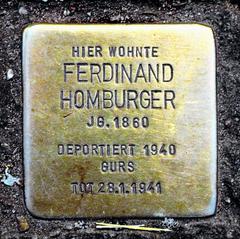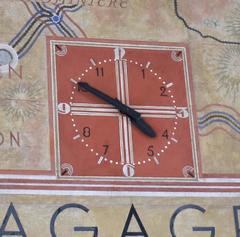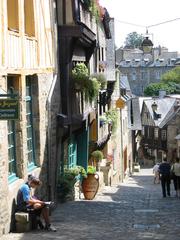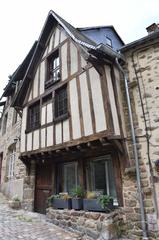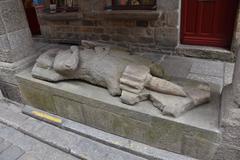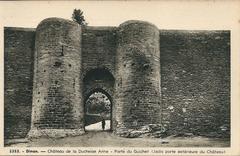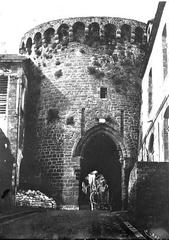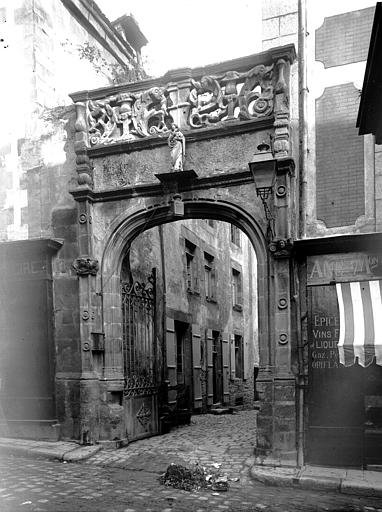
Hôtel De Beaumanoir Dinan: Visiting Hours, Tickets, and Historical Significance
Date: 14/06/2025
Introduction
Nestled in the heart of Dinan’s historic center, the Hôtel de Beaumanoir stands as a remarkable testament to Brittany’s Renaissance heritage and the aristocratic legacy that shaped the town’s identity. Built in the 16th century by Jacques de Beaumanoir, a nobleman and royal cupbearer to King François I, this hôtel particulier reflects the transition from medieval fortifications to grand urban residences following Brittany’s unification with France. Though its interior is not generally open to the public, the building’s elegant granite façade, intricate stone mullioned windows, and distinctive hexagonal staircase tower offer a vivid glimpse into Dinan’s aristocratic past. This guide provides comprehensive information—covering the monument’s history, architectural features, practical visitor tips, and nearby attractions—to help you make the most of your visit to one of Dinan’s most treasured historical sites (French Today, France.fr, Dinan Tourism).
Table of Contents
- Origins and Construction
- Architectural Features
- Historical Significance
- Evolution and Preservation
- Visiting Information
- Nearby Attractions
- Visitor Tips
- FAQ
- Conclusion
- References
Origins and Construction
The Hôtel de Beaumanoir, also known as the Hôtel des Chevaliers de Beaumanoir, was commissioned in the 16th century by Jacques de Beaumanoir, a member of the Breton nobility and royal cupbearer to King François I (French Today). The Beaumanoir family’s roots in the region trace back to the medieval period, and their influence was pivotal in the social and political life of Brittany. The construction of this grand residence coincided with Dinan’s transformation after the Duchy of Brittany’s integration into the French kingdom in 1532, marking a period of architectural innovation and urban development (France.fr).
Architectural Features
Hôtel de Beaumanoir is a quintessential example of Renaissance architecture in Brittany. Key features include:
- Symmetrical granite façade with regularly spaced windows and a central entrance, embodying Renaissance ideals of order and proportion.
- Stone mullioned windows divided by slender columns, allowing more light than earlier medieval designs.
- Ornamental carvings such as heraldic motifs and coats of arms, signifying noble status.
- Hexagonal staircase tower, a distinctive element visible from the street, housing a beautifully crafted stone staircase of 60 steps (SeeVisit).
- Steeply pitched E-shaped roof, characteristic of noble townhouses of the period.
The interior remains mostly private, but the original layout likely includes a grand staircase, formal salons, and family apartments.
Historical Significance
The hôtel’s construction reflected Dinan’s prosperity and the emergence of an urban aristocracy. The Beaumanoir family played influential roles in local governance and at the royal court. Their residence, alongside other grand houses in Dinan, is a testament to the town’s importance as a regional power center during the Renaissance (France.fr). The building’s preservation as a Monument Historique since 1952 underscores its lasting cultural value (Monumentum).
Evolution and Preservation
Originally a noble residence, Hôtel de Beaumanoir was eventually acquired by the city and managed as public housing, reflecting innovative heritage preservation that integrates historic buildings into community life (French Today). Its façades, roofs, entrance portal, and courtyard are protected as historical monuments (POP Culture), ensuring ongoing restoration and maintenance.
Visiting Information
Visiting Hours and Tickets
- The exterior of Hôtel de Beaumanoir can be admired year-round, with no entrance fee.
- Interior access is only possible during special events such as the European Heritage Days (Monumentum), or via occasional guided tours.
- For the most current information, consult the Dinan Tourist Office.
Accessibility
- The site is located within Dinan’s pedestrianized old town.
- Streets are cobbled and may be challenging for those with mobility issues.
- There are no dedicated facilities or wheelchair access at the monument itself.
- The nearest car parks—DuGuesclin, Centre Historique, and Hôtel de Ville—are within 500–650 meters (Dinan-Cap Fréhel Tourism).
Guided Tours and Special Events
- Guided walking tours of Dinan’s historic center often include a stop at Hôtel de Beaumanoir (Carnets Voyages).
- European Heritage Days in September may offer rare interior access; check with the official program or the local tourism office for details.
- Photography is permitted of the exterior; follow posted rules during special openings.
Nearby Attractions
Combine your visit with these nearby sites:
- Château de Dinan: Medieval fortress with towers and ramparts.
- Basilica of Saint-Sauveur: Romanesque and Gothic church.
- Rue du Jerzual: Picturesque street lined with artisans and timber-framed houses.
- Tour de l’Horloge: Iconic 15th-century clock tower.
- Place des Cordeliers: Lively square with cafés and shops.
Visitor Tips
- Best time to visit: Spring and early autumn for pleasant weather and fewer crowds (SoloSophie).
- Footwear: Wear comfortable shoes for cobbled and sloped streets.
- Map or guidebook: Useful for understanding architectural details and history.
- Nearby amenities: The tourism office, cafés, and restaurants are within easy walking distance.
- Accommodation: Hôtel de Beaumanoir is not a hotel; stay at nearby options such as Hôtel du Château Dinan or Hôtel Mercure Dinan Port Le Jerzual (SoloSophie).
Frequently Asked Questions (FAQ)
Q: Is there an entrance fee to visit Hôtel de Beaumanoir?
A: No, the exterior is freely viewable; interior access is only during special events and may require a ticket.
Q: When can I visit the interior?
A: Usually only during European Heritage Days or special guided tours.
Q: Are guided tours available?
A: Yes, through the Dinan tourist office and local guides.
Q: Is the site accessible for visitors with mobility challenges?
A: The area is cobbled and uneven; accessibility is limited.
Q: Can I take photos?
A: Yes, photography is allowed on the exterior; interior photography is restricted during events.
Conclusion
The Hôtel de Beaumanoir is a stunning emblem of Dinan’s Renaissance grandeur and aristocratic past. Even if interior access is rare, the building’s preserved façade and central location in Dinan’s medieval quarter make it an essential stop for anyone exploring Brittany’s historical and architectural heritage.
For an enriched visit, consult the Dinan Tourist Office, participate in guided tours, and consider aligning your trip with special heritage events for rare access to the interior. Download the Audiala app for audio guides, and explore our related articles on Dinan’s remarkable historical sites.
References and Further Reading
- French Today: Dinan Bilingual Dialogue
- France.fr: Three French Walled Medieval Towns to Discover
- Dinan Tourist Office
- Les Droners: Visiting Dinan
- Monumentum: Hôtel de Beaumanoir
- Dinan Cap Fréhel Tourism
- POP Culture: Monument Historique Notice
- Carnets Voyages: Visiter Dinan
- SeeVisit: Ancien Hôtel Beaumanoir
- Musée du Patrimoine: Dinan Heritage Sites
- SoloSophie: Medieval Town of Dinan
- European Heritage Days Official Program
